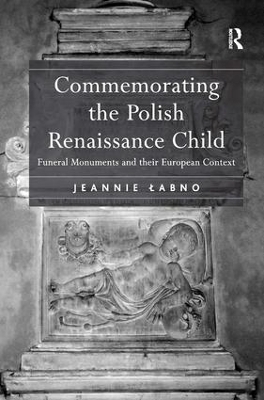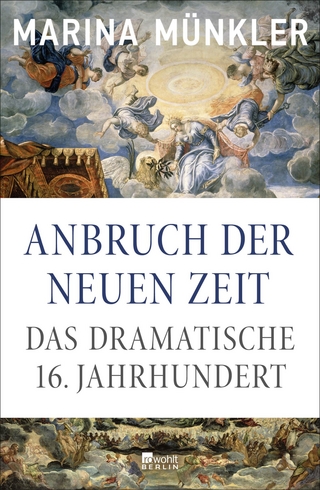
Commemorating the Polish Renaissance Child
Routledge (Verlag)
978-0-7546-6825-1 (ISBN)
The study of funeral monuments is a growing field, but monuments erected to commemorate children have so far received little attention. Whilst the practice of erecting monuments to the dead was widespread across Renaissance Europe, the vast majority of these commemorated adults, with children generally only appearing as part of their parents' memorials. However, as this study reveals, in Poland there developed a very different tradition of funerary monuments designed for, and dedicated to, individual children - daughters as well as sons. The book consists of five major parts, which could be read in any order, though the overall sequencing is based on the premise that an understanding of the context and background will enhance a reading of these fascinating child monuments. Consequently, there is a progression of knowledge presented from the broader context of the earlier parts, towards the final parts where the actual child monuments are discussed in detail. Thus the book begins with an overview of the wider cultural contexts of funerary monuments and where children fitted into this. It then moves on to to look at the 'forgotten Renaissance' of central Europe and specifically the situation in Poland. The middle part addresses the 'culture of memory', examining the role of funerary monuments in reinforcing social, religious and familial continuity. The last parts deal with the physical monuments: empirical data, iconography and iconology. Through this illuminating consideration of children's monuments, the book raises a host of fascinating questions relating to Polish social and cultural life, family structure, attitudes to children and gender. It also addresses the issue of why Poland witnessed this unusual development, and what this tells us about the transmission of cultural and artistic ideas across Renaissance Europe. Drawing upon social and cultural history, visual and gender studies, the work not only asks important new questions, but provides a fresh perspective on some familiar topics and themes within Renaissance history.
Jeannie Labno is an independent art historian specialising in early modern art and culture of Central/Eastern Europe. She has published a number of papers, and the University of Warsaw has recently published the proceedings of an international conference she organised in 2007 at the University of Sussex: East Meets West at the Crossroads of Early Modern Europe.
Contents: Introduction; Part I Context: Shifting the Boundaries, Conceptual Identities and the Social Framework: Shifting boundaries and conceptual identities; Religion in Poland: 'a state without stakes'; Society; Summary part I. Part II Locating a Forgotten Renaissance: Borders, boundaries and barriers; Processes of Renaissance reception in Poland; Pathways of dissemination of artistic motifs: the putto and skull; Summary part II. Part III Culture of Death: In Memoria: Death and commemoration; Death and the child; Summary part III. Part IV The Monumental Body of the Renaissance Child: The monumental body of the Renaissance child: trends and patterns; The monumental body of the Renaissance child: the changing putto; The monumental body of the Renaissance child: other forms of visual presentation; Summary part IV. Part V The Polish Putto-and-Skull: Iconography and Iconology: The Polish putto-and-skull: iconographic layers of significance; The Polish putto-and-skull: rudiments of laughter, grotesque bodies and mythic boundaries; Conclusions; Catalogue; Appendices; Bibliography; Index.
| Erscheint lt. Verlag | 28.5.2011 |
|---|---|
| Verlagsort | London |
| Sprache | englisch |
| Maße | 156 x 234 mm |
| Gewicht | 453 g |
| Themenwelt | Kunst / Musik / Theater ► Malerei / Plastik |
| Geisteswissenschaften ► Archäologie | |
| Geschichte ► Allgemeine Geschichte ► Neuzeit (bis 1918) | |
| Geisteswissenschaften ► Geschichte ► Regional- / Ländergeschichte | |
| Geschichte ► Teilgebiete der Geschichte ► Kulturgeschichte | |
| Religion / Theologie ► Christentum ► Kirchengeschichte | |
| Sozialwissenschaften ► Soziologie | |
| ISBN-10 | 0-7546-6825-8 / 0754668258 |
| ISBN-13 | 978-0-7546-6825-1 / 9780754668251 |
| Zustand | Neuware |
| Informationen gemäß Produktsicherheitsverordnung (GPSR) | |
| Haben Sie eine Frage zum Produkt? |
aus dem Bereich


